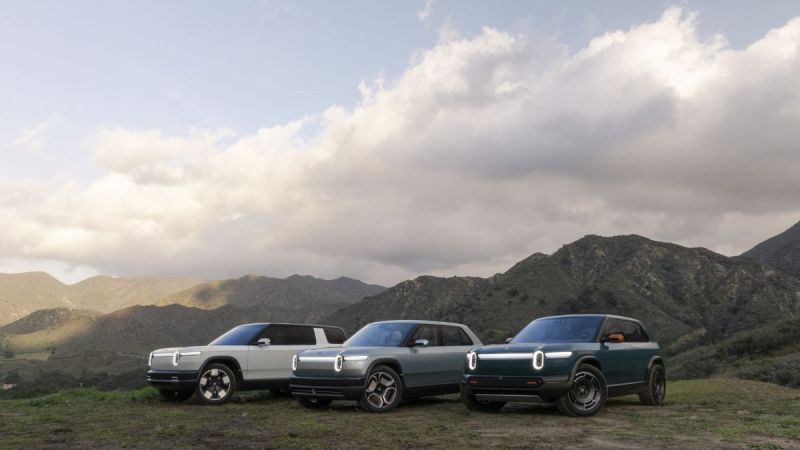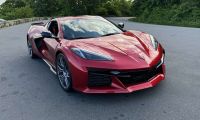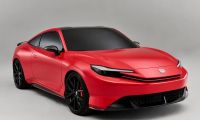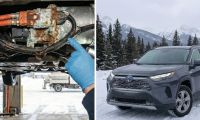Regenerative braking has revolutionized the way electric vehicles (EVs) slow down, converting kinetic energy into electricity rather than relying solely on traditional friction brakes. However, a common question among EV owners is whether regenerative braking completely eliminates the need for brake pads. A recent discussion in the "RIVIAN Electric Vehicle Discussion" group sheds light on this issue, revealing that while regenerative braking significantly reduces brake pad usage, it does not entirely replace them.
The Experience of a Rivian R1S Owner
Matthew J. Vernon, a Rivian R1S owner, sparked an interesting conversation when he shared his experience in the forum. He posted, “I assumed regenerative brakes do not use any of the actual brake pads. However, when my regenerative brakes engage, I hear a typical brake sound, like a small squeak, which usually occurs when pads are used. Does anyone know if regenerative brakes use the actual brake pads?”

This question generated significant engagement, with many Rivian owners and EV enthusiasts weighing in with their insights. The consensus? Regenerative braking does most of the work, but there are situations where traditional brakes must engage.
When Do Traditional Brakes Engage?
Several users provided detailed explanations of when Rivian’s regenerative braking alone isn’t sufficient:
-
Chad Bonnette explained, “They do use normal brakes when you have the option turned on. You can turn it off using normal brakes in the settings.” This suggests that owners have some degree of control over how much their vehicles rely on regenerative braking.
-
Charles Womack Jr. pointed out, “If you have it turned on, braking assist kicks in if you’re fully charged, the battery is cold, or extended downhills.” This is crucial information, as regenerative braking is dependent on battery conditions. A fully charged battery cannot store additional energy, forcing the car to rely on conventional brakes.
-
Patrick Herlihy highlighted a software update that introduced blended braking: “Since an update a year or so ago, they have incorporated blended braking to create a seamless braking experience, allowing the vehicle to determine how much regenerative braking to apply. You can turn off blended braking in the settings (except when using adaptive cruise control, where it is always enabled). However, if you disable it, you will receive warnings that regenerative braking is limited and will need to apply the brakes manually.”
The Role of Blended Braking
Blended braking integrates both regenerative and friction braking to ensure smooth deceleration. This feature enhances efficiency and safety by allowing the vehicle to automatically determine the optimal balance between energy recovery and traditional braking. However, some drivers prefer to disable it, relying solely on regenerative braking whenever possible.
This topic is especially relevant as software updates continue to refine EV braking behavior. For example, a recent issue with Rivian’s phone key showcased how software changes can introduce unexpected challenges for drivers. Similarly, updates affecting regenerative braking could alter driver expectations and performance over time.
The Benefits and Drawbacks of Regenerative Braking
While regenerative braking significantly reduces wear and tear on traditional brake components, it isn’t flawless. Here are some key advantages and limitations:
Advantages:
-
Extended Brake Pad Life – With regenerative braking handling most of the deceleration, brake pads last significantly longer than in traditional vehicles.
-
Energy Efficiency – It recovers energy that would otherwise be lost, improving overall range.
-
Advertising Smooth Driving Experience – When properly calibrated, regenerative braking can make stop-and-go traffic more manageable.
Limitations:
-
Reduced Effectiveness in Certain Conditions – As mentioned by Charles Womack Jr., factors like cold weather and a fully charged battery limit regenerative braking effectiveness.
-
Potential for Brake Noise – As Matthew J. Vernon pointed out, traditional brakes still engage at low speeds, causing occasional squeaks.
-
Steep Learning Curve – Drivers transitioning from gasoline-powered cars often need time to adjust to one-pedal driving and the feel of regenerative braking.
How Does Rivian Compare to Other EVs?
Rivian is not alone in utilizing blended braking. Tesla, Ford, and other manufacturers implement similar strategies in their EVs. In fact, Ford’s Mustang Mach-E and Tesla’s Model Y have received praise for their smooth integration of regenerative and friction braking. However, some Rivian owners have reported occasional issues, like those experienced in winter conditions, where braking performance can be unpredictable.
Another concern is how software updates affect braking behavior. Some EV owners worry that updates might prioritize efficiency over driver control, as seen in cases where adaptive cruise control forces blended braking. Additionally, unexpected issues, such as a Rivian R1S charging malfunction, highlight the importance of reliable braking systems in EVs.
The Takeaway: Regenerative Braking Reduces, but Doesn’t Replace, Traditional Brakes
The discussion in the Rivian forum makes one thing clear: regenerative braking significantly reduces brake pad usage but does not eliminate it entirely. Factors such as battery state, weather conditions, and braking settings all influence how often traditional brakes engage.
For EV owners, this underscores the importance of understanding their vehicle’s braking system. Drivers should experiment with their settings and pay attention to how their car responds in different conditions. While regenerative braking offers efficiency and convenience, knowing when and why traditional brakes activate can lead to better driving habits and extended vehicle longevity.
A Moral Lesson for EV Owners
As EV technology evolves, drivers must adapt and stay informed. A well-maintained vehicle, paired with an understanding of its unique systems, ensures a safer and more efficient driving experience. Just like how we continue learning about advancements in EV technology, we should also remain open to adjusting our driving habits for a smoother, more sustainable future.
What’s Your Experience?
-
Have you noticed traditional brake usage in your EV even when regenerative braking is active?
-
Do you prefer blended braking or full regenerative braking, and why?
Please let us know in the comments below!
Narek Hareyan is a young automotive journalist with experience in a golf cart dealership and an interest in the automotive industry. Follow Narek on X for daily news coverage about cars.












Comments
If you do not regularly use…
Permalink
If you do not regularly use your brakes, they can corrode from rain and road salt. This affects the pistons that actuate the pads onto the rotors and the rotors themselves. Much of what you save using regen exclusively will cost in brake repairs eventually. Just applying them while backing can scrape off surface rust. You will hear grinding until you get the rotors nicely polished. This is not theoretical. Experience with two EVs here.
Lastest college physìcs…
Permalink
Lastest college physìcs study found allowing car to coast and then stopping with conventional brakes is more energy efficient than using regenerative braking. So it really doesn't matter what setting you're on. It should be "off" for best range.
It’s really easy to check…
Permalink
It’s really easy to check using a infrared thermometer, measure the rotor temperature before you start driving, after driving remeasure the rotor temperatures if the rotors are hot the friction brakes are being used if they aren’t hot the truck is using regen to brake.
It shouldn't unless you have…
Permalink
It shouldn't unless you have brake assist on when regen isn't strong enough. I have that turned off on my gen 1. Otherwise it'd be worth checking out that a wheel bearing or the bolts on the CV axle are loose.
If you have Regenerative…
Permalink
If you have Regenerative Brake Assist turned on (settings), it will use the brakes as needed to simulate the regen deceleration when it can't do full regen due to battery condition (state of charge or other temporary current limits). Rivian also uses brakes to finish the slowing down to a stop in 1PD mode and to hold (hills, at a stop, etc.).
There is a setting where it…
Permalink
There is a setting where it will apply the brakes in settings where high regen is not possible, such as near max state of charge for the battery. You can turn this feature off. Otherwise I am not aware regen uses the actual friction brakes.
If you hit the brake pedal…
Permalink
If you hit the brake pedal you will engage the brakes. Sounds like you have a rock between the pads and the rotor. It will fall out. Try going in reverse and applying the brakes.
Regen is initiated when you lift off of the gas and is increased with brake use when you hit the pedal.
They do not. Regeneration…
Permalink
They do not. Regeneration recuperates the momentum automatically when you homoff the accelerator: no brakes involved: only then engaging in emergency braking or if brake is mechanically depressed. He might have an issue.
Regenerative Braking does…
Permalink
Regenerative Braking does not mean that the Brakes themselves regenerate electric power for the batteries. The regeneration is obtained when the Electric Motor goes into reverse mode as the driver applies force to the Brake Pedal.
My model S simply…
Permalink
My model S simply regenerates when you take your foot off. Re-gen is a lot less if batteries are cold but the brakes are never involved (unless I press the brake pedal - with my left foot.
Not sure about Rivian, but…
Permalink
Not sure about Rivian, but on my Model 3, there's a dynamic bar gauge that has a green section and a gray section. Green I'm assuming is regen, gray is friction. 🤷♂️ If the battery is at a high SoC, it relies more on friction.